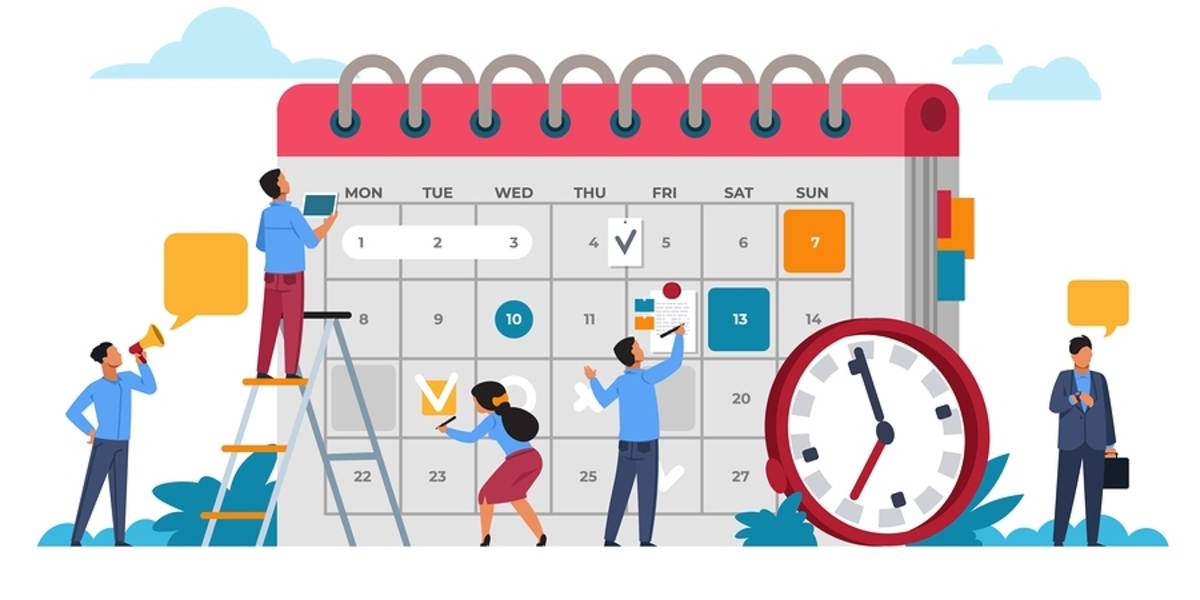
A successful digital marketing strategy involves a good deal of planning. If you’re just posting things on the fly, you won’t get as much bang for your buck as if you took a more deliberate approach to your content.
That’s not to say you can’t still be spontaneous online, but having your strategy planned out is the best way to keep your team on track. Here is why you should be using a content calendar, the steps for creating one, and the things you should consider including on it to make it one of the most powerful tools in your digital marketing arsenal.
Why Your Business Needs a Content Calendar
Content calendars are meant to keep your business on track with its content marketing strategy. It’s a simple schedule telling you when you’re going to produce or post something for weeks or months in advance.
Here are some of the benefits of using a content calendar.
- It helps stimulate content marketing ideas.
- It helps you maintain a consistent content schedule.
- When shareable, it helps your team work together more efficiently.
- It helps you plan for seasonal content, national events, and company sales.
- It helps you plan a diverse mix of content.
- When used with analytics, it helps you track content stats.
How to Build an Effective Content Calendar
You can use any online calendar (such as Google) to create a content calendar and share it with your team. Follow these steps to create a great digital marketing content calendar.
1. Determine Your Topics
Your first step is to make a broad list of the topics you want to cover. The assumption is that you’ve already closely studied your audience to determine their wants and needs. Your content should not only address their strongest concerns but also focus on some of the search terms that are being used to solve them.
Search Engine Optimization (SEO) is going to be a large part of any digital marketing strategy. When approached correctly, your content will help your website rank organically for the right search terms and create the visibility and engagement you need to drive conversions.
2. Select Publication Channels
Once you have your list of topics, you’ll need to decide how you will distribute your content. You have many choices:
- Your website - You can create landing pages, gated content, and videos to boost your business’ credibility. Frequently updated content on your website can also help boost search rankings.
- Your blog - Your company’s blog should also have frequently-posted content that informs and engages its audience.
- Social media - Social media is an excellent platform for building brand awareness and promoting new content.
- Video sharing sites - These sites are excellent places to post interviews and how-to videos.
- Email - Email newsletters allow you to target various segments of your audience with seasonal content, surveys, and press releases.
3. Choose Your Post Frequency
You will need to determine how often you wish to post new content. Plan a schedule that you can realistically handle. Can you post daily or every other day, or is this too much? Whatever frequency you choose, try to keep it consistent.
4. Create a Spreadsheet
Your content calendar should give you an overview of your digital marketing content strategy, but you’re going to need another resource with some additional detail. Consider creating a spreadsheet in Google Drive (or any other online editorial calendar) that you can share with your team. Some of the information that you’ll want to list for each piece of content includes:
- Publication date
- Working title
- Content description
- Publication channels
- Keywords for SEO
- Author
- Any CTAs
- Potential sources
- Status: draft, complete, published
5. Define the Workflow
Unless you’re a one-person operation, it’s going to be helpful to delegate some of this work and establish some responsibilities. When you create your first content calendar, sit down with your team, and develop your goals. Beyond this, create guides and workflows for:
- Each team member that is responsible for different tasks
- Suitable content formats, editorial guides, and preferred tone of voice
- Guide on using the content calendar, including who can make changes
- Who can answer questions and what channels to use for communication

Ideas for Producing Engaging Content
It’s a common misconception that the only type of content you’ll want to create is a blog post. These are effective, but they only scratch the surface of what is available to you regarding “types” of content.
Whether you are posting on a blog, social media platform, or sending an email newsletter, here are some content ideas that you can put on your new calendar:
- Lists - People love lists because they’re easy on the eyes and just make sense. Create content in the form of lists, and it will perform well.
- How-Tos - Create educational posts that show your audience “how to” do something better, like build a staircase or back up their hard drive.
- Q&As - If you get a lot of questions about your company, its products, or services, create some Q&A videos or other content to address them.
- Case Studies - Case studies allow you to demonstrate how your product or service has been transformational for another client, and they can help drive sales.
- Demos - Consumers love to watch video demos of products and services to learn more before they commit.
- Company News - Company news helps build your brand and create a stronger connection with consumers. Share what’s happening with your business and its people.
- White Papers - Often provided as downloadable PDFs, these are excellent tools for getting more subscribers and providing more in-depth information.
Your business’ content not only helps it show up in the search results but also drives traffic and conversions. This should be a priority for your business, considering it has the potential to produce business growth.
Contact us to learn more about how Connection Model can help your business with a content marketing strategy with our results-driven solutions.
Written By: David Carpenter


